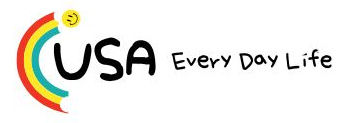The health care sector, as represented by the Health Care Select Sector SPDR ETF (XLV) , has significantly underperformed the S & P 500 over the past several years, trailing by 58% from the pre-pandemic February 2020 highs through the beginning of this week. It has also underperformed by 23.7% since the recent “liberation day” tariff-induced lows on April 8. This underperformance is the widest margin in decades over a similar period. The results of this weakness are that health care stocks are trading at a substantial discount, with the sector’s 2025 forward price-to-earnings (P/E) ratio at 14 compared to a 10-year average of 18. The discount stems in part from weakness in some of the index’s largest constituents. For example, troubled UnitedHealth trades at a P/E of 13, half the multiple it enjoyed before the resignation of the CEO, a government investigation into Medicaid billing and the assassination of the head of the company’s health care unit in Manhattan. Eli Lilly has underperformed the broader market, despite its hugely successful obesity drugs, which may have led the stock to get a bit ahead of itself in 2024. Still, an aging U.S. population remains a significant driver of health care demand. With a record number of Americans aged 65 and older, health care spending is projected to continue rising sharply, potentially approaching 20% of GDP within the next seven-to-eight years. Health care is a non-cyclical sector, offering stability during economic uncertainty. While discretionary spending may decline in bear markets, health care demand remains resilient. Because of this, the sector provides defensive qualities. Although the shift toward commercial payers from government programs like Medicaid is expected to enhance profitability, it’s clear from UnitedHealth’s missteps in this area that there will be some growing pains. However, in this case, the return of the former CEO will likely help the company get back on track. The most significant XLV holdings include LLY, Johnson & Johnson , AbbVie , UNH , and Abbott Laboratories . The generally low volatility of these stocks is reflected in the ETF which, despite tracking a single sector, has had volatility only modestly higher than that of the diversified S & P 500, about 11% vs. roughly 10% over the past 30 days. The trade For options traders, the benefit of low volatility when making directional bets is low option prices. For example, a trader interested in creating a bullish bet with limited risk through the end of the year could buy the January 137 XLV calls for ~ $6.20, about 14% implied volatility, or about 4.6% of the current price, and look for opportunities to sell nearer dated puts on dips or upside calls on rips to offset the modest theta (decay). DISCLOSURES: None. All opinions expressed by the CNBC Pro contributors are solely their opinions and do not reflect the opinions of CNBC, NBC UNIVERSAL, their parent company or affiliates, and may have been previously disseminated by them on television, radio, internet or another medium. THE ABOVE CONTENT IS SUBJECT TO OUR TERMS AND CONDITIONS AND PRIVACY POLICY . THIS CONTENT IS PROVIDED FOR INFORMATIONAL PURPOSES ONLY AND DOES NOT CONSITUTE FINANCIAL, INVESTMENT, TAX OR LEGAL ADVICE OR A RECOMMENDATION TO BUY ANY SECURITY OR OTHER FINANCIAL ASSET. THE CONTENT IS GENERAL IN NATURE AND DOES NOT REFLECT ANY INDIVIDUAL’S UNIQUE PERSONAL CIRCUMSTANCES. THE ABOVE CONTENT MIGHT NOT BE SUITABLE FOR YOUR PARTICULAR CIRCUMSTANCES. BEFORE MAKING ANY FINANCIAL DECISIONS, YOU SHOULD STRONGLY CONSIDER SEEKING ADVICE FROM YOUR OWN FINANCIAL OR INVESTMENT ADVISOR. Click here for the full disclaimer.





